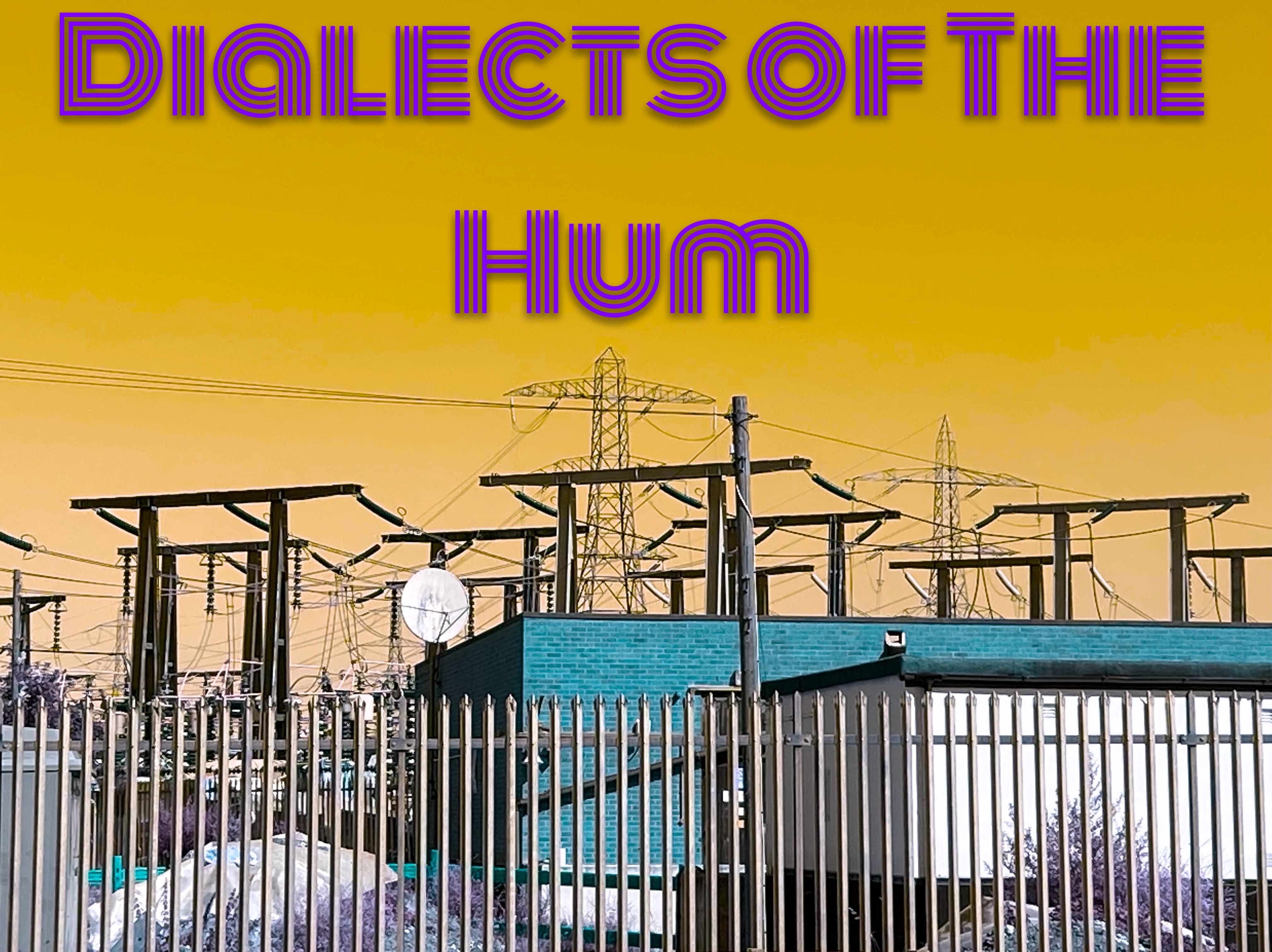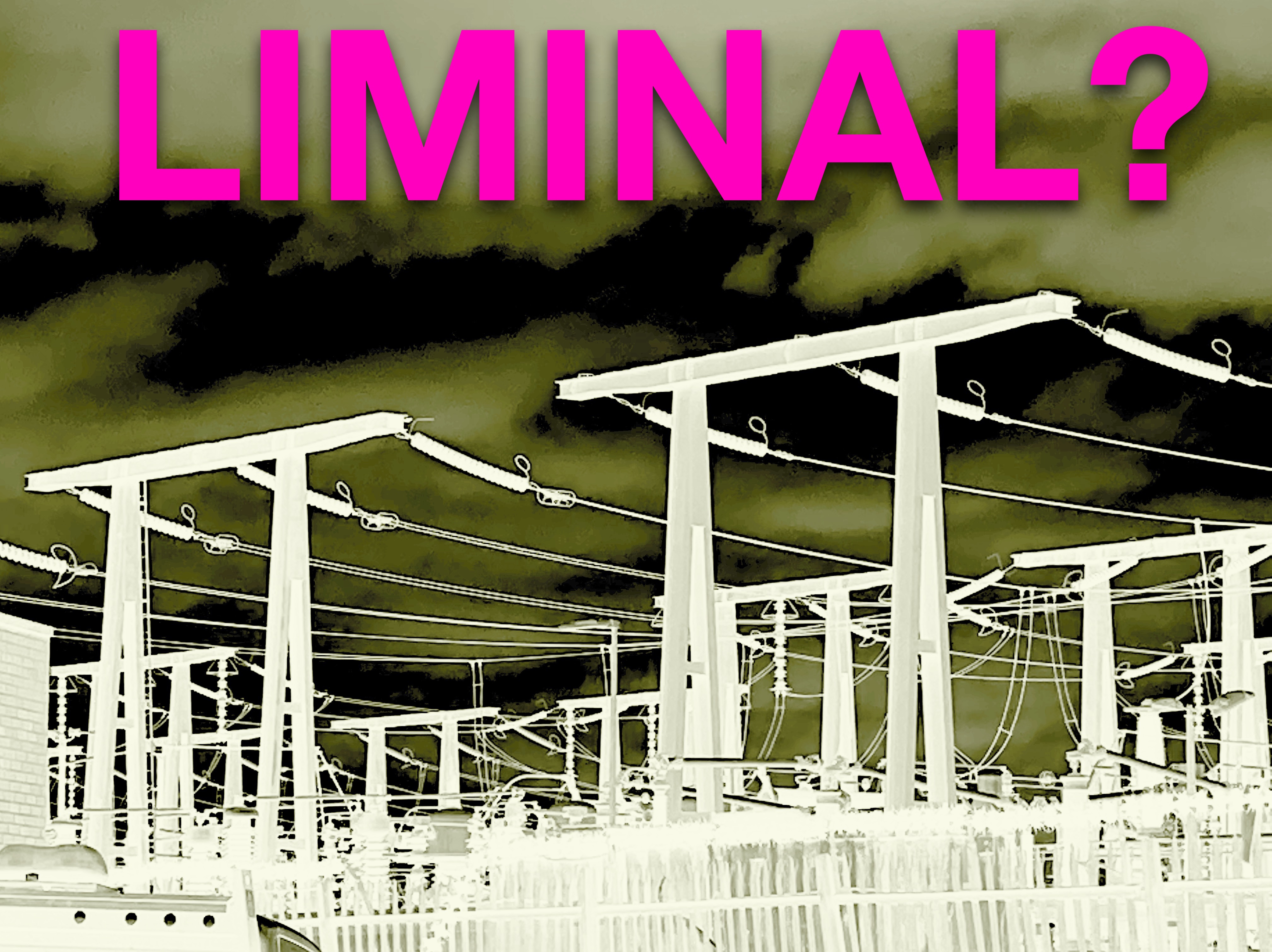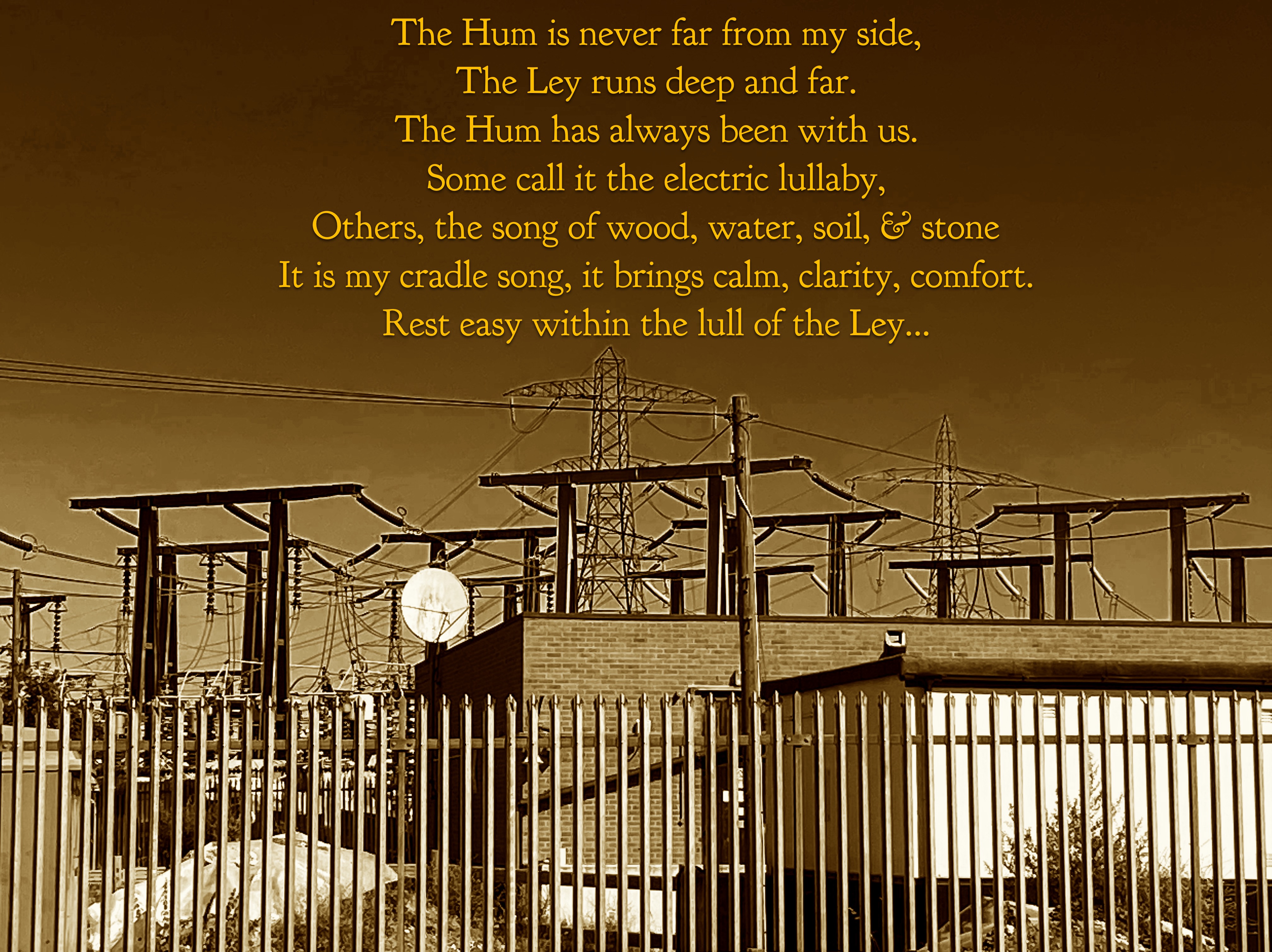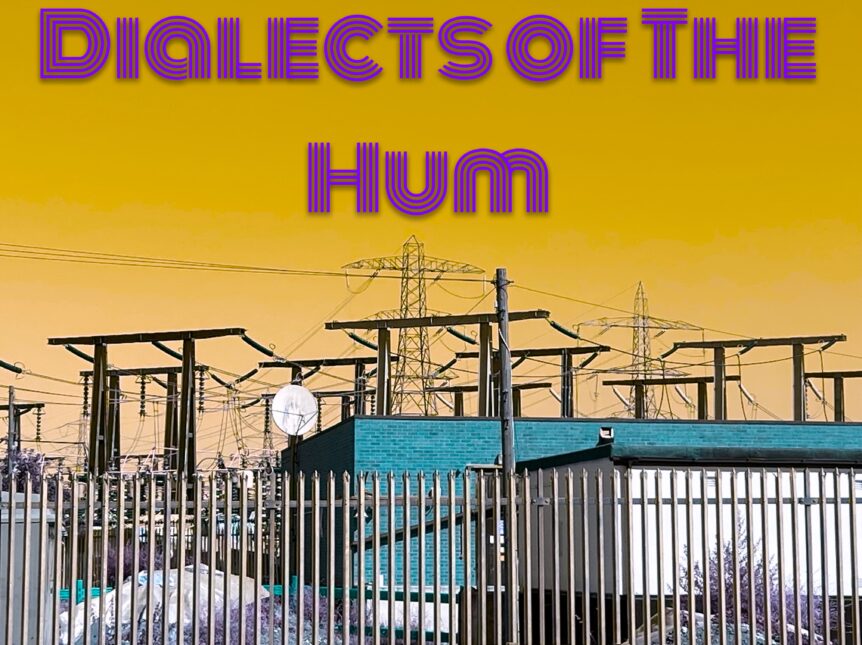I have been somewhat obsessed with pylons since I was a young child, especially after my dad told me about how they help to convey energy around the world. For a young, socially awkward girl, living alone with her dad, this was a revelation. I began having vivid dreams where I would leave my physical body restlessly slumbering in its bed, and connect, through the pylons over yonder, with the rest of the world. I’d soar along the electric leys to far away countries; Australia, the Soviet Union (this was the early 80s), China…seeking out others like me who wanted to be set free from the bullies and gossips who, perhaps, inhabited their daily existences too. I was lucky enough to have a dad who indulged and encouraged my ‘obsessions’ with spectres, megaliths and folklore. He encouraged me to read Alfred Watkins’, The Old Straight Track (first published in 1925), which highlighted his documentation and mapping of ley lines. Watkins proposed that leys are straight lines (tracks), invisible to the naked eye, that convey esoteric energy. These leys, according to Watkins, were perceived by prehistoric peoples, especially those who lived during the Neolithic period (c. 4000 BCE – 2300 BCE), and helped to inform the locating of ritual megalithic monuments, such as Stonehenge and Avebury. Watkins also suggested that many significant Medieval and Early Modern buildings were constructed upon ley lines to benefit from the power surging through them.

Now you may be asking yourself, ‘what have invisible lines that may, or may not, stretch out across the landscape have to do with pylons and their connecting cables?’ Well, you may recall that earlier in this blog I referred to ‘electric leys’? There are people (myself included) who believe that the energy pulsing through pylons, cables, and substations, doesn’t exist solely to bring light, warmth and technological comforts into your homes and workspaces. It is capable of so much more. We refer to this pulsating energy as The Hum. When, as a child, I dreamt of being transported along those electric leys to connect with people in distant lands, I was, perhaps, unconsciously regressing back millennia, to a time when communing with those who were distant, both physically and spiritually, was practised regularly within Britain.
I can already anticipate your next question; ‘but there were no pylons in Britain thousands of years ago, so what are you trying to say? Well, I would argue that The Hum is not a modern phenomenon, it has existed since time immemorial. In the 20th and 21st centuries it is most closely associated with pylons, but if we step away from the electric ley for a short while I shall endeavour to explain…
Much archaeological research has been undertaken which focuses on Animism; the belief that natural materials/landscapes – water, wood, soil stone etc, were animated and imbued with the spirits of ancestral forebears. Although this belief system is, sadly, not so prevalent in Britain today, it is still integral to many cultures around the world. Colin Richards (2013) has proposed that the stones used to create Neolithic circles may well have been chosen, not for the ease of their transportation, but because they contained specific energies that would inject ‘power’ into both the monument and the people engaging with it. This power, I would suggest, is The Hum. An energy which permeates the very fibre of the earth and water and which is, in turn, transferred on to all living things. The Hum penetrates through to our very bones and connects life physically and metaphorically. It is still pulsing through the geological strata, waterways and forests, but now also has a modern counterpart within the electric ley.
Although my obsession with The Hum may seem somewhat strange, perhaps even unnerving to many, I believe that a greater connection with the electric ley could offer positive possibilities for stimulating communal unity and solidarity. There are many different dialects within The Hum, dialects that can often conflict with each other, connectivity is still maintained, and energy is constant.
This, for me, is an especially pertinent case to highlight in today’s UK, where Brexit and the rise of populist far-right political groups, has led to a widespread antipathy towards POC, migrant workers and political refugees. I aim to highlight that even though there are many different ‘dialects’ within today’s UK, this adds to our country’s overall positive energy, and that when combined, these vernaculars create far more harmony than discord.

The events of 2020/1 have left many people feeling isolated and afraid. Fearful, not just of the biological pandemic, but of technology too. This is especially the case with 5G, vaccination treatments, and the Internet. However, this year has also highlighted how important technology is. It has enabled the world as a whole to stay connected, not only through the internet, but also television, radio, and other forms of digital media. Connectivity is key; together although alone.
The Hum opens up ideas about connections between people, landscape, and technology, not just within our own individual vicinities, but regionally, nationally, internationally, perhaps even cosmically? For myself personally, my childhood dreams of travelling without moving, connecting with people and lands throughout the world, by ascending into The Hum have finally been realised.
The electric ley has enabled me to wander through the Web and the Twitterverse. I now have friends throughout the world, from Australia and New Zealand, throughout Asia, the Americas, and Europe. Many of my newfound pals also sought to escape from their difficult childhood realities and connect with like-minded souls. It may have taken decades for us to finally find each other, but the important thing is that we have, and now we will continue to seek out all the others who grew up depending on their electric dreams in order to survive…

Richards, C., 2013. Interpreting Stone Circles. In: Building the Great Stone Circles of the North. Oxford: Windgather Press, pp. 2 – 30.
Watkins, A., [1925] 2017. The Old Straight Track: Its Mounds, Beacons, Moats, Sites and Mark Stones, Oxfordshire: HeritageHunter.

